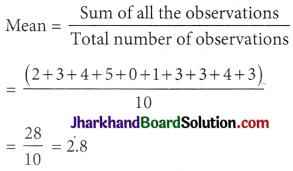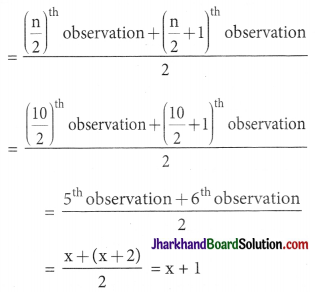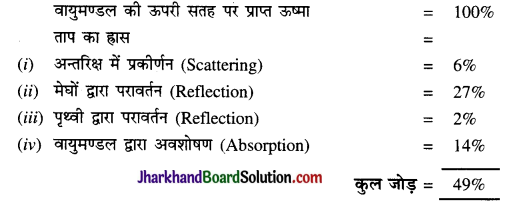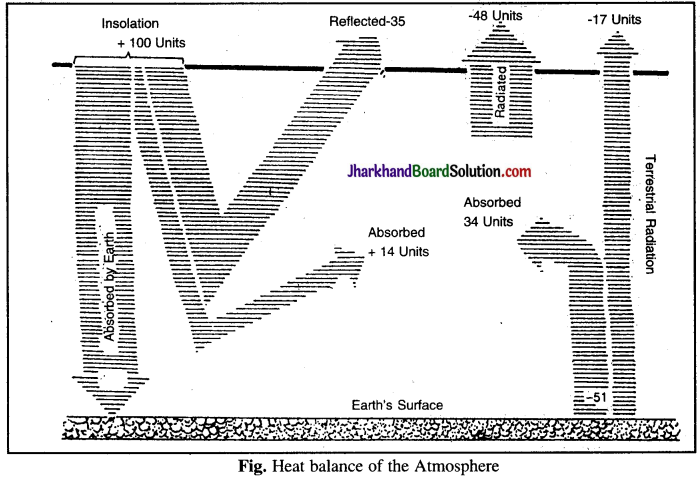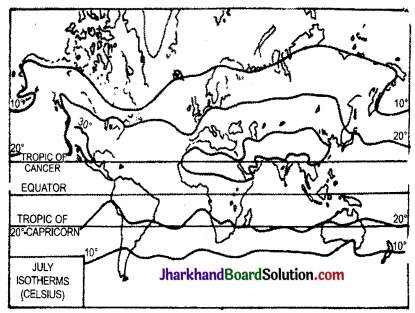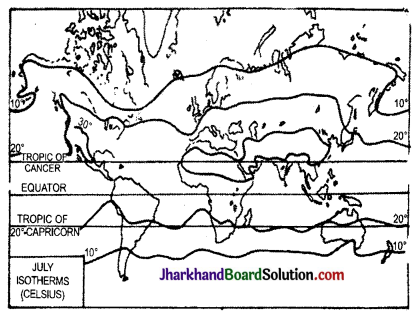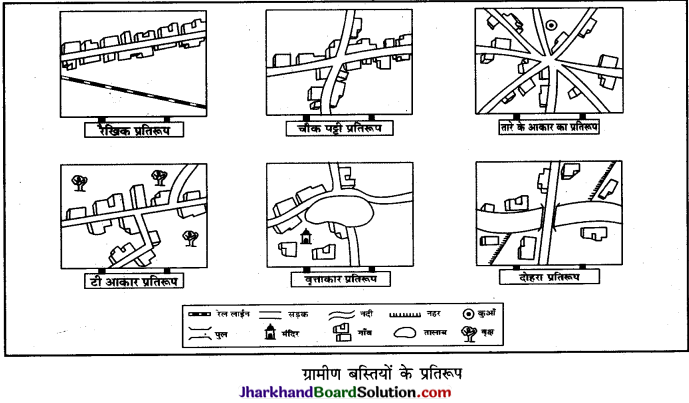JAC Board Class 10 Social Science Notes History Chapter 1 The Rise of Nationalism in Europe Notes
→ In 1848, Frederic Sorrieu, a French artist, prepared a series of four print visualizing his dream of a world made up of ‘democratic and social republic
→ Artists of the time of the French Revolution personified Liberty as a female figure. According’to Sorrieu’s utopian vision, the * people of the world are grouped as distinct nations, identified through their flags and national costume.
→ During the nineteenth century, nationalism emerged as a force which brought about sweeping changes in the political and mental world of Europe. The end result of these changes was the emergence of the nation¬state in place of the multi-national dynastic empires of Europe.
→ A modem state, in which a centralized power exercised sovereign control over a clearly defined territory, had been developing over a long period of time in Europe.
→ A nation-state was one in which the majority . of its citizens, and not only its rulers, came to develop a sense of common identity and shared history or descent.
![]()
→ The French -Revolution and the Idea of the Nation:
- The first clear expression of nationalism came with the French Revolution in 1789.
- The political and constitutional changes that came in the wake of the French Revolution led to the transfer of sovereignty from the monarchy to a body of French citizens.
- The ideas of la patrie (the fatherland) and le citoyen (the citizen) emphasized the notion of a united community enjoying equal rights under a constitution.
- The Estates General was elected by the body of the active citizens and renamed the National Assembly.
Customs duties and dues were abolished and a uniform system of weights and measures was adopted. - Students and other members of educated middle classes began setting up Jacobin club. Their activities and campaigns prepared the way for the French armies which moved into Holland, Belgium, Switzerland and much of Italy in the 1790’s.
- Through a return to monarchy Napoleon had, no doubt, destroyed democracy in France, but in the administrative field he had incorporated revolutionary principles in order to make the whole system more rational and efficient.
- The Civil Code of 1804-usually known as the Napoleonic Code-did away with all privileges based on birth, established equality before the law and secured the right to property.
- Napoleon simplified administrative divisions, abolished the feudal system and freed peasants from serfdom and manorial dues.
→ Transport and communication systems were improved.
- Businessmen and small-scale producers of goods, in particular, began to realize that uniform laws, standardised weights and measures, and a common national currency would facilitate the movement and exchange of goods and capital from one region to another.
- In many places such as Holland and Switzerland, Brussels, Mainz, Milan, Warsaw, the French armies were welcomed as harbingers of Liberty.
- It became clear that the new administrative arrangements did not go hand in hand with political freedom.
- Increased taxation, censorship, forced conscription into the French armies required to conquer the rest of the Europe, all seemed to outweigh the advantages of the administrative changes.
→ The Making of Nationalism in Europe
- Germany, Italy and Switzerland were divided into kingdoms, duchies and cantons whose rulers had their autonomous territories.
- They did not see themselves as sharing a collective identity or a common culture.
- The Habsburg Empire ruled over Austria-Hungary.
- In Hungary, half of the population spoke Magyar while the other half spoke a variety of dialects.
- Besides these three dominant groups, there also lived within the boundaries of the empire.
- The only tie binding these diverse groups together was a common allegiance to the emperor.
→ The Aristocracy and the New Middle Class
- Socially and politically, a landed aristocracy was the dominant class on the continent.
- The members of this class were by a common way of life that cut across regional divisions.
- Their families were often connected by ties if marriages.
- This powerful aristocracy was, however, numerically a small group. The growth of towns and the emergence of commercial classes whose existence was based on production for the market.
- Industrialization began in England in the second half of the eighteenth century, but in France and parts of the German states it occurred only during the nineteenth century.
- In its wake, new social groups came into being: a working-class population, and middle classes made up of industrialists, businessmen, professional.
- It was among the educated, liberal middle classes that ideas of national unity following the abolition of aristocratic privileges gained popularity.
→ What Did Liberal Nationalism Stand for?
- In early-nineteenth century Europe was closely allied to the ideology of liberalism.
- The term ‘liberalism’ derives from the Latin root liber, meaning free.
- Liberalism stood for freedom for the individual and equality of all before the law.
- It emphasized the concept of government by consent.
- A constitution and representative govern¬ment through parliament.
- The right to vote and to get elected was generated exclusively to property-owning men.
- Men without property and all women were excluded from political rights.
- Women and non-propertied men and women organised opposition movements demanding equal political rights.
- The abolition of state-imposed restrictions on the movement of goods and capital.
- A merchant travelling in 1833 from Hamburg to Nuremberg to sell his goods would have to pass through 11 customs barriers and pay a customs duty of about 5% at each one of them.
- Obstacles to economic exchanges and growth by the new commercial classes, who argued for the creation of a unified economic territory allowing the unhindered movement of goods, people and capital.
- The union abolished tariff barriers and reduced the number of currencies from over thirty to two.
→ A New Conservation after 1815
- Following the defect of Napoleon in 1815, European governments were driven by a spirit of conservatism.
- Most conservatives, did not propose a return to the society of pre-revolutionary days.
- That modernization could in fact strengthen traditional institutions like the monarchy.
- A modem army, an efficient bureaucracy, a dynamic economy, the abolition of feudalism and serfdom could strengthen the autocratic monarchies of Europe.
- In 1815, representatives of the European powers – Britain, Russia, Pmssia and Austria – who had collectively defeated Napoleon, met at Vienna to draw up a settlement for Europe.
- The Bourbon dynasty, which had been deposed during the French Revolution, was restored to power, and France lost the territories it had annexed under Napoleon.
- German confederation of 39 states that has been set up by Napoleon was left untouched.
- Autocratic did not tolerate criticism and dissent, and sought to curb activities that questioned the legitimacy of autocratic government.
![]()
→ The Revolutionaries
- During the years following 1815, the fear of repression drove many liberal-nationalists undergrounds.
- Revolutionary at this time meant a commitment to oppose monarchical forms and to fight for liberty and freedom.
- Giuseppe Mazzini, bom in Genoa in 1807, he became a member of the secret society of the Carbonari.
- He was sent into exile in 1831 for attempting a revolution in Liguria.
- Mazzini believed that god had intended nations to be the natural units of mankind.
- Secret societies were set up in Germany, France, Switzerland and Poland.
- Mettemich described him as ‘The most dangerous enemy of our social order’.
→ The Age of Revolution: 1830-1848
- As conservative regimes tried to consolidate their power, liberalism and nationalism came to be increasingly associated with revolution in many regions of Europe such as the Italian and German states, the provinces of the Ottoman Empire, Ireland and Poland.
- ‘When the France sneezes’, Mettemich once remarked, ‘the rest of the Europe catches cold’.
- An event that mobilized nationalist feelings among the educated elite across Europe was the Greek war of independence.
- Greece had been the part of the Ottoman Empire since the fifteenth century.
- Greeks living in exile and also from many west Europeans who had sympathies for ancient Greek culture.
→ The Romantic Imagination and National Feeling
- The development of nationalism did not come about only through wars and territorial expansions.
- Culture played an important role in creating the idea of the nation: art and poetry, stories and music helped express and shape nationalist feeling.
- Romanticism was a cultural movement which sought to develop a particular form of nationalist sentiments.
- Romantic artists and poet generally criticised the glorification of reason and science and focused instead on emotions, institution and mystical feelings.
- Other romantics were through folk song, folk poetry and folk dances that the true spirit of the nation.
- National feelings were kept alive through music and languages.
- Karol Kurpinski, celebrated the national struggles through his operas and music, turning folk dances like the polonaise and mazurka into nationalist symbols.
- Language played an important role in developing nationalist sentiments.
- Russian language was imposed everywhere.
- Many members of the clergy in Poland began to use language as a weapon of national resistance.
- As a result, a large number of priests and bishops were put in jail or sent to Siberia by the Russian authorities as punishment for their refusal to preach in Russians.
→ Hunger, Hardship and Popular Revolt
- The 1830s were years of great economic hardship in Europe.
- The first half of the nineteenth century saw an enormous increase in population.
- In most countries there were more seekers of jobs than employment.
- Population from rural areas migrated to the cities to live in overcrowded slum.
- Food shortage and widespread unemploy¬ment brought the population of Paris out on the roads.
- National Assembly proclaimed a republic, granted suffrage to all adult males above 21, and guaranteed the right to work.
- Earlier, in 1845, weavers in Silesia had lead a revolt against contractors who supplied them ra\y material and gave them orders for finished textile.
- On 4 June at 2 p.m. a large crowd of weavers emerged from their homes and marched in pairs up to the mansion of their contractors demanding higher wages.
- The contractors fled with his family to a neighbouring village which, however, refused to shelter such a person.
- He returned 24 hours later having requisitioned the army.
- In the exchange that followed, eleven weavers were shot.
→ 1848: The Revolution of the Liberals
- The poor, unemployment and starving peasants and workers in many European countries in the years 1848, a revolution led by the educated middle classes was under way.
- Men and women of the liberal middle classes combined their demands for constitutionalism with national unification.
- They drafted a constitution for a German nation to be headed by a monarchy subject to a parliament.
- Wilhelm IV, King of Prussia, rejected it and joined other monarchs to oppose the elected assembly.
- While the opposition of the aristocracy and military became stronger, the social basis of parliament eroded.
- The issue of extending political rights to women was a controversial one within the liberal movement.
- Women had formed their own political associations, founded newspaper and taken part in political meetings and demonstrations.
- Women were admitted only as observers to stand in the visitors’ gallery.
- Monarchs were beginning to realize that the cycles if revolution and repression could be ended by granting concessions to the liberal-nationalist revolutionaries.
![]()
→ The Making of Germany and Italy Germany
- After 1848, nationalism in Europe moved away from its association with democracy and revolution.
- This can be observed in the process by which Germany and Italy came to be unified as nation-states.
- Nationalist feelings were widespread among middle-class Germans.
- This liberal initiative to nation-building was, however, repressed by the combined forces of the monarchy and the military, supported by the large landowners of Prussia.
- Prussia took on the leadership of the movement.
- Three wars overseen years-with Austria, Denmark, and France-ended in Prussian victory and completed the process of unification.
- The nation-building process in Germany had demonstrated the dominance of Prussian state power.
- The new state placed a strong emphasis on modernising the currency, banking, legal and judicial systems in Germany.
→ Italy
- Like Germany, Italy too had a long history of political fragmentation.
- Italians were scattered over several dynastic states as well as the multi-national Habsburg Empire.
- Italy was divided into seven states.
- Italian language had not acquired one common form and still had many regional and local variations.
- Giuseppe Mazzini had sought to put together a coherent programme for a unitary Italian Republic.*
- Young Italy for the dissemination of his goals.
- The failure of revolutionary uprising both in 1831 andf 1848 meant that the mantle now fell on Sardinia-Piedmont under its ruler King Victor Emmanuel II to unify the Italian states through war.
- Italy offered them the possibility of economic development and political dominance.
- Italy was neither a revolutionary nor a democrat.
- Italian population, among whom rates of illiteracy were high, remained blissfully unaware of liberal-nationalist ideology.
→ The Strange Case of Britain
- The model of the nation or the nation-state, some scholars have argued, is Great Britain.
- It was the result of a long-drawn-out process.
- There was no British nation prior to the eighteenth century.
- ‘United Kingdom of Great Britain’ meant, in effect, that England was able to impose its influence on Scotland.
- The British parliament was henceforth dominated by its English members.
- Ireland was forcibly incorporated into the United Kingdom in 1801.
- British flag, the national anthem, the English language – were actively promoted and the older nations survived only as subordinate partners on this union.
→ Visualising the Nation
- While it was easy enough to represent a ruler through a portrait or a statue.
- In other words, they represented a country as if it were a person.
- Nations were then portrayed as a female figure.
- The female figures became an allegory of the nation.
- Christened Marianne, a popular Christian name, which underlined the idea of people’s nation.
→ Nationalism and Imperialism
- By the quarter of the nineteenth century nationalism no longer retained its idealistic liberal-democratic sentiment of the first half of the century, but became a narrow creed with limited ends.
- The most serious source of nationalists tension in Europe after 1871 was the area called the Balkans.
- The Balkans was a region of geographical and ethnic variation.
- One by one its European subjects nationalities broke away from its control and declared independence.
- The Balkan area became an era of intense conflict.
- The Balkan states were jealous of each other and each hoped to gain more territory at the expense of each other.
- But the idea that societies should be organized into ‘nation-states’ came to be accepted as natural and universal.
